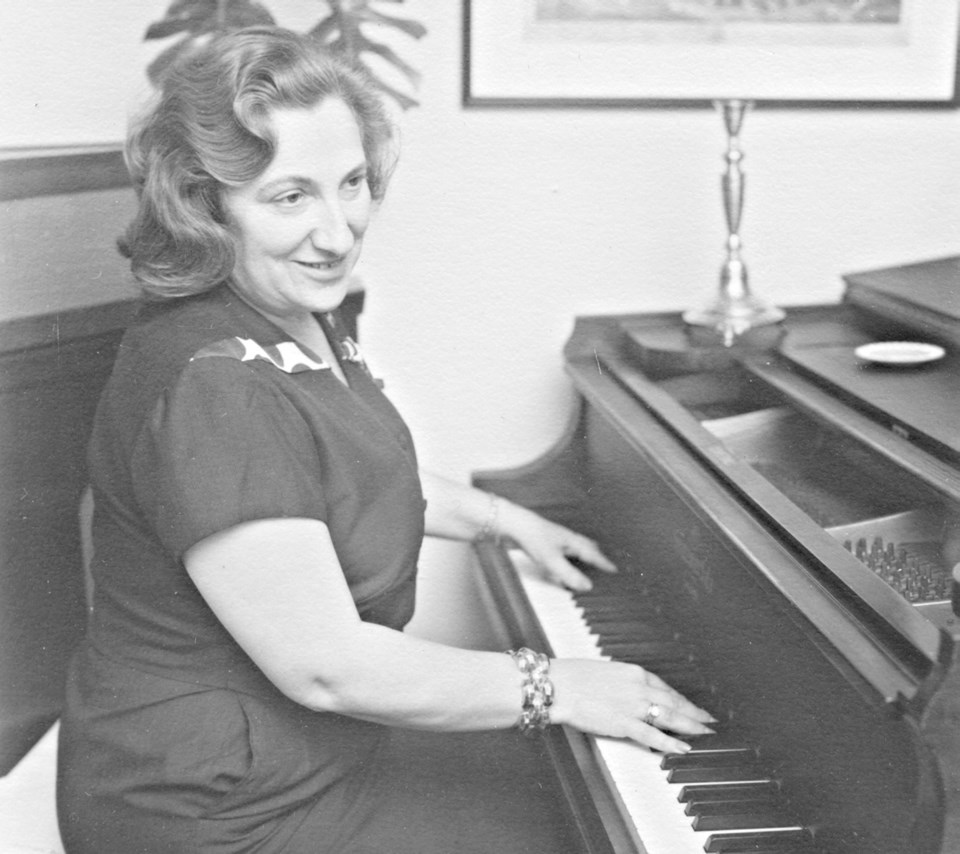It took an Austrian Jew, fleeing the Nazis and the Japanese army, to reveal to the world the musical treasure of British Columbia First Nations.
Ida Halpern, a Viennese music scholar who studied the cultural contexts of European folk music and lyrics, arrived in Vancouver with her husband, Georg, in 1939, the year after Nazi Germany annexed Austria.
In 1947, she became one of the first musicologists to interview native elders and chiefs to record and catalogue songs of the Kwakwaka’wakw, Nuu-Chah-Nulth, Tlingit, Haida and Coast Salish peoples.
“Begin with an open mind and the highest respect for this unique, complex musical culture,” Halpern later wrote of her approach. “Find the best way to understand this important music.”
Halpern’s work is now accessible in digital form at the B.C. Archives, made available by the Royal B.C. Museum.
Called Access to Memory, or AtoM, her work is available for archivists, scholars and the public; it includes writings, recorded interviews and 342 of Halpern’s music recordings.
Halpern began to learn about the music by establishing relationships with elders and chiefs. She spent years interviewing and staying at the homes of elders and chiefs, mostly on Vancouver Island. They were enthusiastic at the notion their songs would be recorded and preserved.
While anthropologists had labelled as “nonsense” some words in First Nations songs, Halpern was among the first to document the complex associations and protocol between the music and the important potlatch ceremonies.
For example, she realized the importance of certain words and sounds; “Ga, Ga, Ga” in a raven song, for example, depicted the bird’s call. In songs about paddling canoes, she found a connection between the rhythms of the music and the action being described in the lyrics.
Halpern, who was born in Austria in 1910, died in Vancouver in 1987.
Her approach to studying West Coast aboriginal songs by examining cultural contexts was inspired by the professors she met while enrolled in the Musicological Institute of the University of Vienna in 1929.
After she and Georg married in 1936, they briefly lived in Italy before returning to Vienna. In 1938 — the year Halpern gave her dissertation at the university — Nazi Germany annexed Austria. That same year, the Halperns fled to Shanghai, where Halpern was hired as a professor of musicology. But with signs the Japanese army was about to arrive, the couple fled to Vancouver in 1939.
Halpern’s parents stayed in Austria and were never heard from again, despite extensive post-war searches.
In Vancouver, Halpern purchased a piano and began giving lessons, quickly establishing herself in the city’s music community.
By 1942, Halpern was teaching the first music classes at the University of B.C. By 1948, she had founded the Vancouver Friends of Chamber Music. She would eventually serve as director of the Vancouver Metropolitan Opera and the Vancouver Symphony, and write a music column for The Province.
Raymond Frogner, an archivist with B.C. Archives, said only a handful of Halpern’s recordings are available online because many are associated with First Nations families and ceremonies. To avoid cultural offence or invasion of privacy, the recordings can only be heard in private by appointment through B.C. Archives. No re-recordings are permitted.
Frogner said he has long admired Halpern’s work as a researcher who never lost sight of her respect and admiration for First Nations people, their culture and music.
“She recognized their music as something that is globally unique,” he said.
The music had been looked at before, but she took it as a serious cultural expression and something that was worth studying musically.”
• Go to the website: search-bcarchives.royalbcmuseum.bc.ca and search for Halpern.



